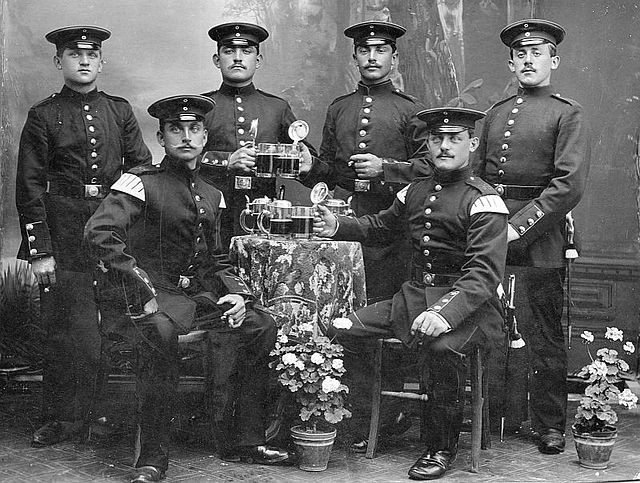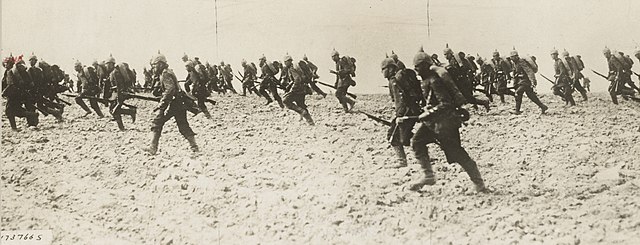Paul Ludwig Hans Anton von Beneckendorff und von Hindenburg was a German field marshal and statesman who led the Imperial German Army during World War I. He later became president of Germany from 1925 until his death. During his presidency, he played a key role in the Nazi seizure of power in January 1933 when, under pressure from his advisers, he appointed Adolf Hitler as chancellor of Germany.
Official portrait, c. 1919–1928
House of Hindenburg in Posen (Poznań) on Podgórna Street (former Hindenburgstrasse)
Paul von Hindenburg as a cadet in Wahlstatt (1860)
Hindenburg as a lieutenant in the 3rd Garderegiment in 1870[clarification needed]
The Imperial German Army (1871–1919), officially referred to as the German Army, was the unified ground and air force of the German Empire. It was established in 1871 with the political unification of Germany under the leadership of Prussia, and was dissolved in 1919, after the defeat of the German Empire in World War I (1914–1918). In the Federal Republic of Germany, the term Deutsches Heer refers to the German Army, the land component of the Bundeswehr.
German Army hussars on the attack during maneuvers, 1912
Draftees of the German Army, 1898
German infantry charging across open ground on the battlefield, 1914
Imperial and state cockades




![Hindenburg as a lieutenant in the 3rd Garderegiment in 1870[clarification needed]](https://upload.wikimedia.org/wikipedia/commons/thumb/e/e0/Lt._Hindenburg.jpg/288px-Lt._Hindenburg.jpg)



